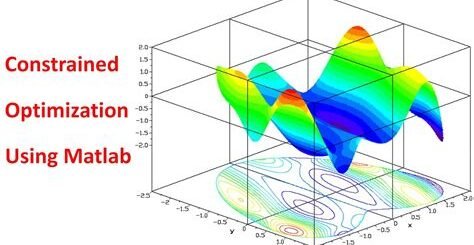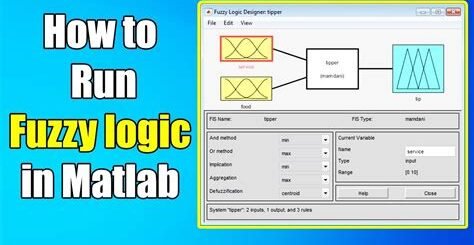Advanced Image Processing Techniques in Matlab
Are you looking to take your image processing skills to the next level in Matlab? In this blog post, we will explore advanced techniques that will help you enhance and manipulate digital images with precision and efficiency. From improving image quality with histogram equalization, to removing noise using median filtering, and segmenting images with thresholding techniques, we will cover a wide range of advanced image processing methods in Matlab.
Whether you are a seasoned Matlab user or just getting started, this blog post will provide valuable insight into utilizing the powerful image processing capabilities of Matlab. By the end of this post, you will have a deeper understanding of edge detection using the Sobel operator and how to recognize objects using template matching. Join us as we delve into the world of advanced image processing techniques and take your Matlab skills to the next level.
Image Enhancement with Histogram Equalization
Image Enhancement is a crucial step in digital image processing, as it helps to improve the visual quality of images for various applications. One powerful technique for image enhancement is Histogram Equalization. This method aims to adjust the contrast of an image by modifying the intensity distribution of the pixels. By redistributing the pixel values, Histogram Equalization can enhance the overall image brightness and detail.
When applied to an image, Histogram Equalization works by mapping the original pixel intensities to new values based on their cumulative distribution function (CDF). This process effectively stretches the intensity range of the image, resulting in improved contrast and visual appearance. As a result, areas of the image with lower contrast can be enhanced to reveal more details, making it an effective technique for improving image quality.
One of the key benefits of Histogram Equalization is its simplicity and computational efficiency. It can be applied to a wide range of images with varying levels of brightness and contrast, making it a versatile tool for image enhancement. Additionally, Histogram Equalization does not require any prior knowledge about the image content, making it a valuable technique for automatic image processing applications.
In conclusion, Histogram Equalization is a powerful method for image enhancement that can significantly improve the visual quality of digital images. By redistributing the pixel values to achieve a more uniform intensity distribution, Histogram Equalization can enhance the contrast and detail of images, making it a valuable tool for a wide range of image processing applications.
Removing Noise using Median Filtering
In digital image processing, noise is often present in images acquired from various sources such as sensors, cameras, or scanners. It can be detrimental to the quality of the image and affect its visual appearance. One common technique used to remove noise from images is Median Filtering.
Median filtering is a non-linear digital filtering technique that is widely used to reduce noise in images. It works by replacing each pixel’s value with the median value of the neighboring pixels. This helps to smooth out the variations in pixel intensity caused by noise, resulting in a cleaner and more visually appealing image.
One of the key advantages of median filtering is its ability to preserve important image features such as edges and small details. Unlike other smoothing techniques like mean filtering, which can blur the edges of objects in the image, median filtering maintains the sharpness of the edges while effectively removing the noise.
Another benefit of median filtering is its simplicity and efficiency. With the use of a sliding window over the entire image, the median filter can be quickly applied to large images without the need for complex computations, making it a practical choice for real-time image processing applications.
Segmentation with Thresholding Techniques
Segmentation with Thresholding Techniques is an important step in image processing, as it helps in separating the object of interest from the background. Thresholding is a simple yet effective technique where a pixel value is compared with a threshold value. If the pixel value is greater than the threshold, it is assigned one value, and if it is less than the threshold, it is assigned another value. This process helps in creating a binary image, where the object of interest is highlighted.
One of the most commonly used thresholding techniques is the Global Thresholding, where a single threshold value is used for the entire image. This technique is suitable for images with consistent lighting and contrast. However, for images with varying lighting and contrast, Adaptive Thresholding techniques are used, where different threshold values are used for different regions of the image.
Another popular technique is Otsu’s Thresholding, which automatically calculates the optimal threshold value based on the image histogram. This technique is particularly useful for images with bi-modal histograms, where the pixel intensities are clearly divided into two peaks.
With the advancements in image processing algorithms, various Multi-level Thresholding techniques have also been developed, which allow for segmenting images into more than two classes. These techniques are especially useful for segmenting complex images with multiple objects of interest.
Edge Detection with Sobel Operator
Edge detection is a crucial step in image processing, as it helps to identify the boundaries of objects within an image. One popular method for edge detection is the Sobel operator, which uses convolution to highlight edges based on the gradient magnitude.
The Sobel operator works by calculating the gradient of the image intensity at each pixel, in both the horizontal and vertical directions. It then combines these gradients to determine the overall gradient magnitude, which is used to identify edges.
One of the advantages of the Sobel operator is its simplicity and efficiency in detecting edges. It is also less sensitive to noise compared to other edge detection techniques, making it a popular choice for various computer vision applications.
However, it’s important to note that the Sobel operator may not always accurately detect edges in images with complex textures or patterns. In such cases, additional image processing techniques may be necessary to improve edge detection results.
Object Recognition using Template Matching
Object recognition using template matching is a widely used technique in the field of computer vision and image processing. It involves comparing a template image with a larger image in order to identify instances of the template. This technique is particularly useful for tasks such as facial recognition, object tracking, and pattern recognition.
Template matching works by sliding the template image over the larger image and computing a similarity measure at each position. This measure is typically based on the correlation between the pixel values in the template and the corresponding pixels in the larger image. The position with the highest similarity measure is then considered to be a match.
One of the main advantages of template matching is its simplicity and ease of implementation. It does not require any complex algorithms or machine learning models, making it a practical choice for real-time applications. However, it does have limitations in terms of its sensitivity to variations in scale, rotation, and illumination.
Despite its limitations, template matching remains a valuable tool for object recognition in certain scenarios. With the appropriate preprocessing and careful selection of template images, it can be highly effective in identifying specific objects or patterns within an image.


